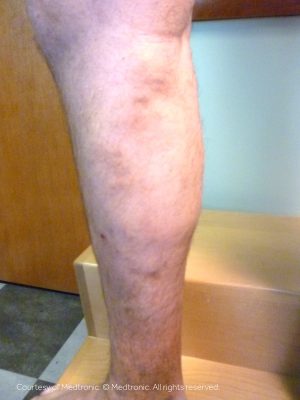Restless legs syndrome is characterized by a feeling of discomfort and an irresistible need to move the feet.

Restless legs syndrome (RLS) is characterized by discomfort during rest and the urge to move, affecting Legs Moving At Night. It can be either idiopathic (primary) or secondary (associated with other medical conditions, such as iron deficiency, polyneuropathy, uremia, etc.). The diagnosis of Restless legs syndrome is mainly clinical. Before starting treatment, a thorough evaluation is needed in order to detect (and treat) possible causes of secondary RLS and eliminate triggers. First line therapy consists of dopamine agonists, but other types of drugs are also available.
Restless Leg Causes a syndrome that was characterized by sensory symptoms and motor disorders in the limbs mainly during periods of inactivity. A feature of this syndrome is that the affected patients have difficulty describing the symptoms, mentioning either that they feel the irresistible need to kiss their feet, or that they suffer from insomnia, etc. In any case, the long-term consequences are chronic sleep deprivation, chronic fatigue, and severe quality of life. Therefore, for Involuntarily Leg Movement the correct diagnosis is extremely important.
Diagnosis of Restless Legs Syndrome
This is mainly based on anamnesis and clinical examination, with 4 essentials required (Walters AS, towards a better definition of the restless legs syndrome, The International Restless Legs Syndrome
- The irresistible need to move the feet, usually associated with paresthesia or dysesthesia;
- Motor nonlinearism, materialized in the most varied ways (the patient beats the foot, rubs the feet of each other, etc.);
- Exacerbation of symptoms or their exclusive presence during periods of inactivity and variable improvement upon resumption of activity;
- Circadian variations in symptom severity (often improved after 5 am).
Of course, there are other elements that support the diagnosis, for example the therapeutic effect of dopaminergic compounds, insomnia, daytime sleepiness, positive hereditary-collateral history, etc.
Classification: The syndrome of restless Leg Spasm can be of primary type (cause remains unknown, family aggregation being identified in 25-75% of cases) or of secondary type (specific causes are identified, for example iron deficiency, peripheral neuropathy, magnesium deficiency or folate , amyloidosis, diabetes, Lyme disease, rheumatoid arthritis, Sjögren's syndrome, uremia, certain drugs: neuroleptics, tricyclic antidepressants, selective serotonin reuptake inhibitors, certain substances: alcohol, caffeine, etc.
Treatment For Restless Leg Syndrome
For patients with mild symptoms, treatment is not necessarily necessary.
In restless legs syndrome, pharmacotherapy is mainly palliative, addressing the symptoms, healing being possible only in the secondary forms mentioned. Another important aspect is the character of the treatment: continuous or discontinuous. In some cases, the symptoms appear sporadically, the periods of remission being of the order of weeks or months. In these cases, treatment is indicated only during periods of activity. If the symptomatology is present at least three nights a week, continuous Restless Leg Treatment is required.
Article Source: https://legveinsblog.wordpress.com/2019/09/05/clinical-and-therapeutic-options-for-restless-legs-syndrome/